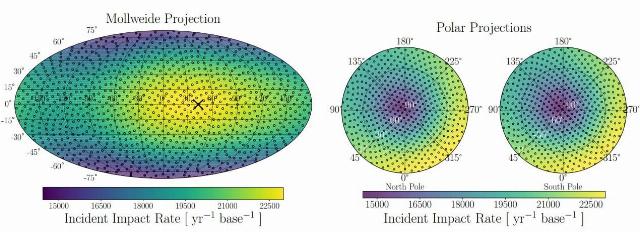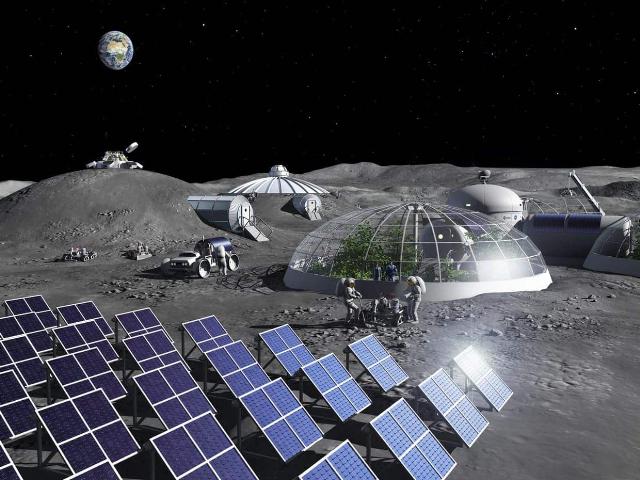Calculations show that dozens of micrometeoroids will fall on the lunar base every day, and even the smallest of them can damage the module and pose a threat to astronauts. However, there is a proven solution to this problem — the so-called Whipple shield.
NASA considers the area of the 79-kilometer Nobile crater to be one of the most promising places for the upcoming Artemis III crew landing on the Moon and the construction of a permanent lunar base in the future. It is located about 150-200 kilometers from the South Pole of the Moon. Other potential locations of the base are also located in the lunar permafrost.
The polar regions of the Earth's natural satellite have attracted the interest of space powers after the discovery of rich deposits of water ice in them. The water on the Moon is expected to be used for splitting into hydrogen and oxygen, which means that both rocket fuel and an oxidizer are produced simultaneously.
Astrophysicists and engineers from Columbia University (USA) recently noted that the South Pole of the Moon is a good choice for a permanent station from another point of view. In his article published on the preprint server arXiv.org They talked about the number of micrometeoroids falling on the future lunar base — celestial bodies up to several centimeters in size and weighing no more than about 10 grams.
At first glance, such rubble does not seem life-threatening, but in fact it flies at tremendous speeds. Therefore, the fall of even a grain of sand comparable in thickness to a human hair is already potentially dangerous there, and a larger stone can pierce the housing of a residential module or a spacesuit.
Scientists modeled such a bombardment for a conditional 100-meter structure and "positioned" it at a thousand different points on the lunar surface. It turned out that the base will be subjected to 15-23 thousand micrometeoroid impacts annually. At the same time, the least number of celestial bodies falls precisely at the poles.
This is due to the rotation of the Moon around its axis: during the 27 days of its complete revolution, the same limited number of stars circle in the sky above the pole, and at the equator during this time the observer would survey the entire celestial sphere. Therefore, it turns out that meteoroids fly to the lunar equator, low and middle latitudes from all possible directions, and to the poles from a relatively small area of the sky.

The number of micrometeoroids in different latitudes of the Moon
Image source: Daniel A. Yahalomi et al, 2025
Since the base is going to be built at some distance from the pole, it is worth considering another factor: whether it is located on the visible side of the Moon or on the other side. According to the researchers, it would be better to be located on the reverse side: the gravity of the Earth causes more meteoroids to fly towards the visible side. At the same time, for permanent communication with the Earth, it is advisable to be located where the Earth is visible.
The researchers assured that in any case, there is a solution to the problem of micrometeoroids on the Moon: it was proposed back in 1947 by the American astronomer Fred Lawrence Whipple. He invented a protective shield of an unusual design for spaceships: two walls with either a void or a light material between them. This principle is actively used in space exploration. There are more than a hundred different configurations of such shields installed on the modules of the International Space Station.

The basic design of the Whipple shield
Image source: NASA
The upper relatively thin wall exposes itself to the main impact. The micrometeoroid pierces it, but at the same time it collapses into numerous smaller fragments. Then these fragments fall into the void or the material filling the gap and spread there in a kind of cloud. Due to this, by the time the lower, thicker wall is reached, this cluster loses most of its initial impact force and becomes much less dangerous.
According to calculations, only a particle weighing 0.069 grams can penetrate the Whipple shield on the Moon. Meanwhile, 99.9997 percent of all micrometeoroids falling there are lighter. A celestial body capable of overcoming this protection is projected to fall on the lunar base approximately once every 42 years.
Adele Romanova

